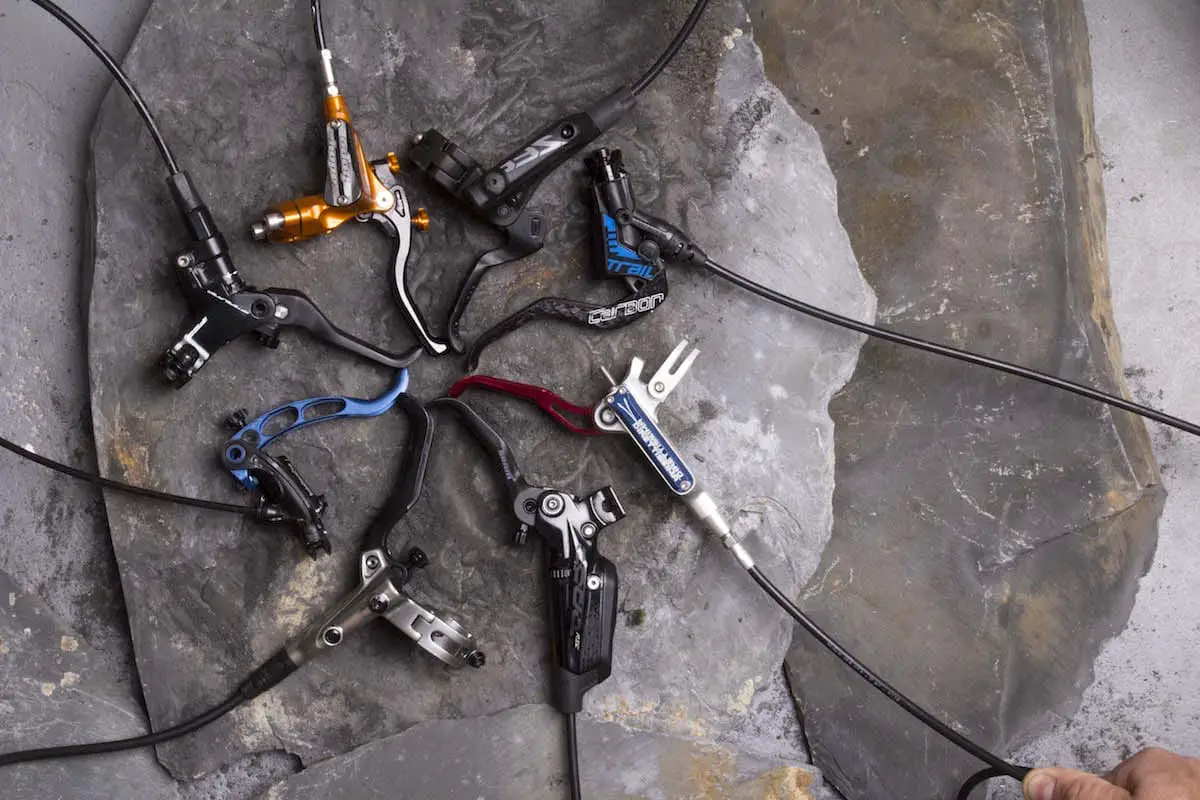In Issue #115 of Singletrack Magazine, Wil and the team tested and reviewed eight powerful trail brakes
In each of our own eternal quests to ride our bikes better, smoother and faster, paying attention to a device that has the sole purpose of slowing us down seems more like an obligation, rather than something to lust and fawn over.
But, at risk of stating the obvious, we’ll state the obvious and say that brakes are a rather crucial facet of a mountain bike. There is no question that the difference between having ten or eleven sprockets on your rear cassette is far less impacting on the overall ride experience compared to the difference between using a sticky, vague and underpowered brake, and a smooth and powerful one. There are certainly more dramatic repercussions anyway.
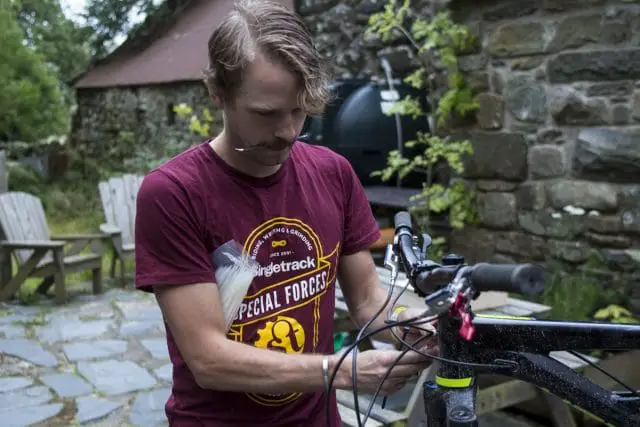
Power is important, but as they say, power is nothing without control. Ultimately a good brake is one that you don’t think about – they should just work. Because when it comes to high-speed panic braking on the trail, you don’t think, you just brake.
A brake that is intuitive, predictable, powerful and controllable means you can approach technical situations with more confidence, safe in the knowledge that you’ll be able to decelerate with a small tug from your index fingers whenever required. With more control at your fingertips, you’ll be able to brake less, brake later, and carry more speed.
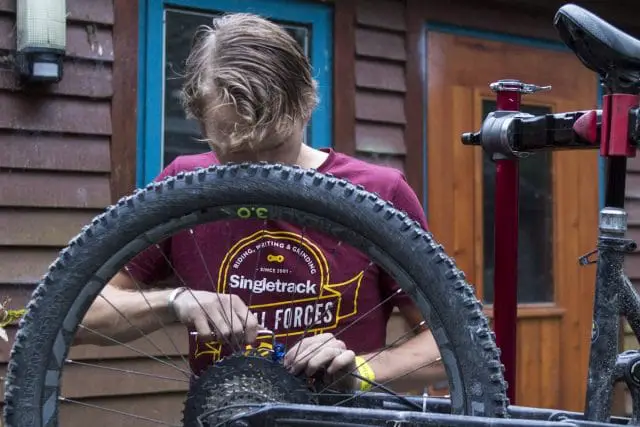
There have been many improvements in disc brake technology since our last group test in Issue 99, with most offerings across the board having improved in power, feel and durability. There are more options available from more brands, with everything from lightweight twin-pot brakes with carbon lever blades for cross-country racing, through to multi-pot monster stoppers for battling with gravity.
The eight brakes we’ve amassed for this group test sit somewhere in the middle. Powerful and versatile trail brakes designed for a wide range of riders and riding styles. Some of the brakes have four pistons, and others have two. One brake actually has both. But at their core, they’re all designed to increase your control and confidence to help progress your riding whether you’re on a hardtail or a 160mm travel enduro bike.
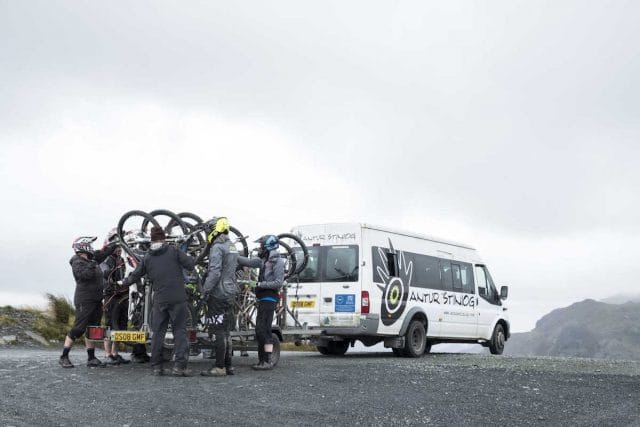
As part of the test process, we took all eight brakes down to Wales for three solid days of back-to-back testing on the slatey, unforgiving, high-speed trails of Antur Stiniog. Each brake was set up with 180mm rotors front and rear, and we left the hoses uncut to ensure the factory bleed was retained. Once we’d had sufficient comparative test time on all the brakes in a controlled environment, we then returned to Calderdale to continue testing each brake individually on more familiar home trails.
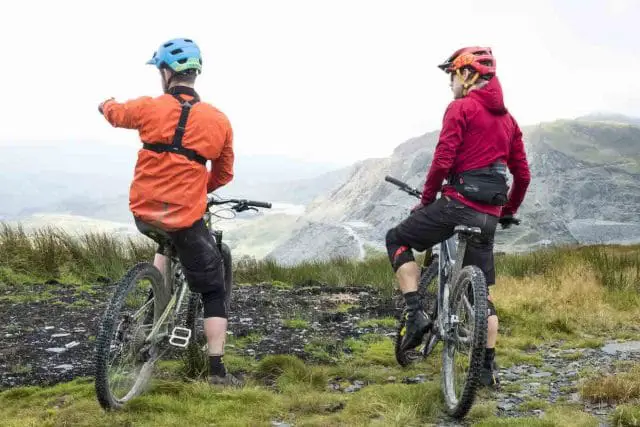
Step Inside My Lab
But before going any further, what exactly makes up a good disc brake?
While we wouldn’t recommend you take cooking advice from us, we’ve been informed that there’s more than one way to cook an egg. What we do know is that there’s also more than one way to build a brake. Different shaped levers alter the feel at your fingertips, while larger or smaller callipers deliver varying levels of power. There are different adjustments, multiple types of oil, and varying degrees of modulation and power delivery. If you’re thinking about upgrading the stock brakes on your current brake, here’s a bit of a guide on what to look for.
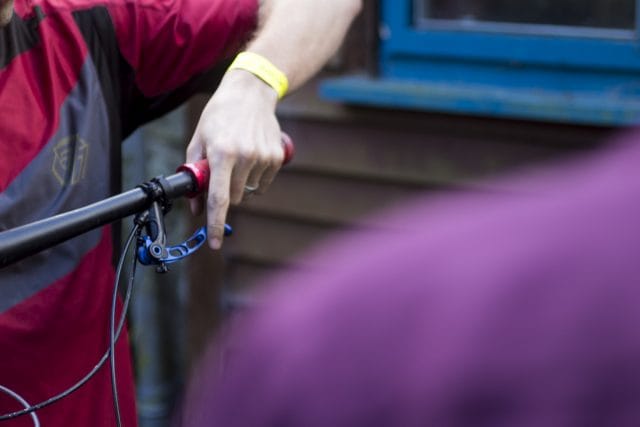
Levers
As the primary contact point between you and your brakes, a nice ergonomically shaped lever blade with a small hook at the end should allow your finger to sit in a comfortable and natural position. Because brakes are so powerful these days, only single finger braking is really necessary. However, Magura and BFO do make aftermarket blades for those who insist on using two fingers on the lever blade.
Aside from lever shape, look for a split clamp for easier installation, as well as a lever body that’s going to sit well with your shifter and dropper post setup. On that note, some of the brakes here offer integration with certain shifters to help reduce bar clutter.
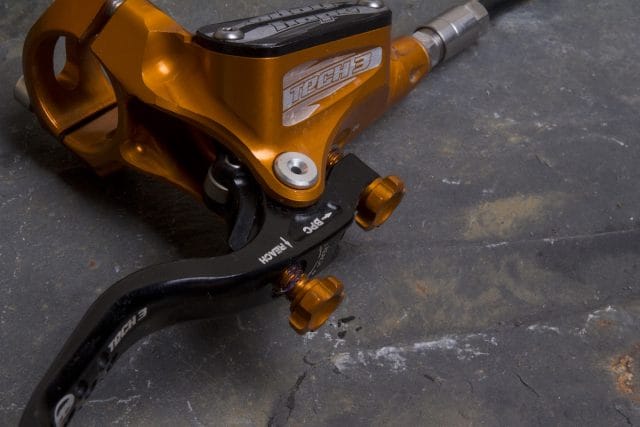
Adjustments
Most disc brake levers will offer some kind of reach adjustment, whether it’s tooled or tool-free. This allows you to adjust how close the lever blade sits away from the grips, and is crucial for getting your brakes set up right. Higher-end brakes will also provide an additional bite-point adjuster that allows you to fine-tune the point in the lever stroke where the pads engage the rotor.
Pistons
In general, the bigger the pistons and the more of them, the more powerful the brake. Traditionally, most lightweight cross-country brakes utilise two pistons, while downhill brakes use four pistons for added power. However, we’ve also seen an increase in trail brakes being built with four-piston callipers.
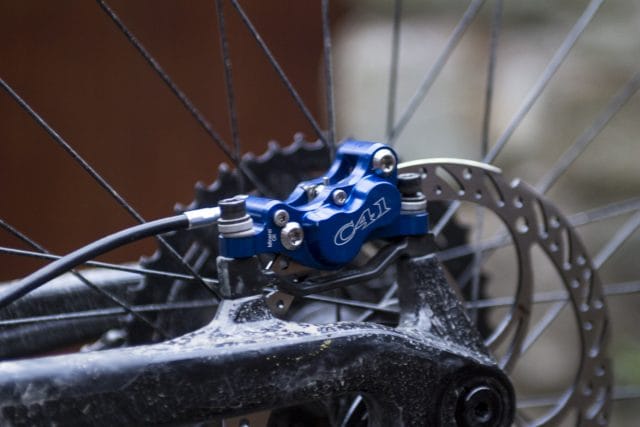
Pad Compounds
There are multiple types of pad compound available, either from the brake manufacturer itself or through a range of aftermarket brands. Resin (also known as organic) pad compounds offer great bite and quiet performance, but wear quickly in wet weather. Sintered metallic pad compounds can be noisier, but they’re more durable overall and more resistant to fade on long descents. A semi-metallic pad compound aims to straddle the difference between the two, and some riders will even choose to run different compounds front and rear.
Rotors
Like pistons, the bigger the rotor the more braking power you’ll have. Rotor sizes are generally available in 160, 180 and 200mm diameters, though there are some variations from brand to brand. It’s quite common for bike manufacturers to spec their bikes with a larger rotor upfront for added stopping power on the front wheel, while lowering the relative braking power on the rear wheel to reduce the chance of locking it up and skidding the tyre.
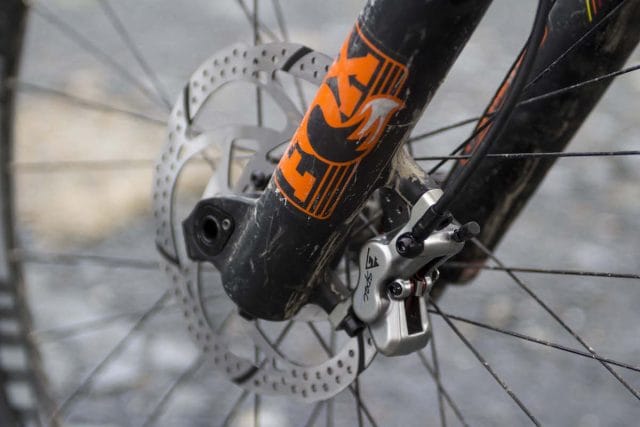
Changing out the rotor size and pad compound can significantly alter the power and feel of your brakes, so consider this if you’re searching for more performance with your current brakes. We’d always recommend pairing one brand’s brake calliper to the same brand’s rotors, as that’s how they’ve been designed and tested here.
Bleeding
Typically, hydraulic disc brakes will either run mineral oil or DOT fluid. DOT is cheaper and more readily available, while mineral oil is less harsh on the environment. However, the Trickstuff brakes use a fluid called Bionol, which is derived from sunflower seeds and is entirely biodegradeable, while the BFOs use fluid that is 80% water.
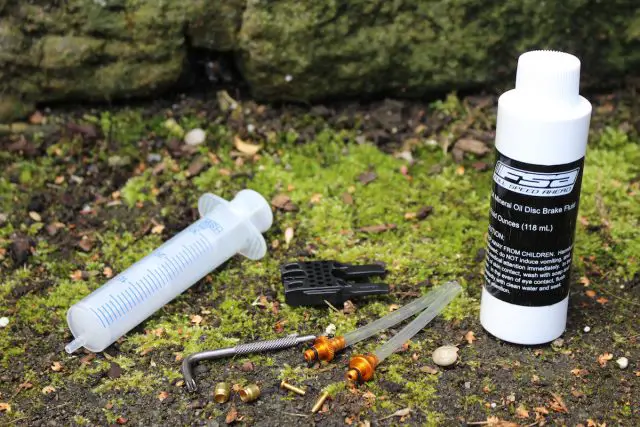
Hydraulic disc brakes do need bleeding periodically to remove any air bubbles that may have made their way past the pistons (or from elsewhere) and into the brake fluid. Hydraulic fluid can also break down over time as well, so either source an aftermarket bleed kit for you to perform this procedure at home, or have your local bike shop bleed your brakes for you.
And so, without further ado, let’s take a look to find out which brakes performed best out of our group of eight, and which ones we’d recommend for trail riding.
Best Engineered: Hope Tech 3 E4
- Price: £155 per end (rotors & adapters sold separately)
- From: Hope Technology
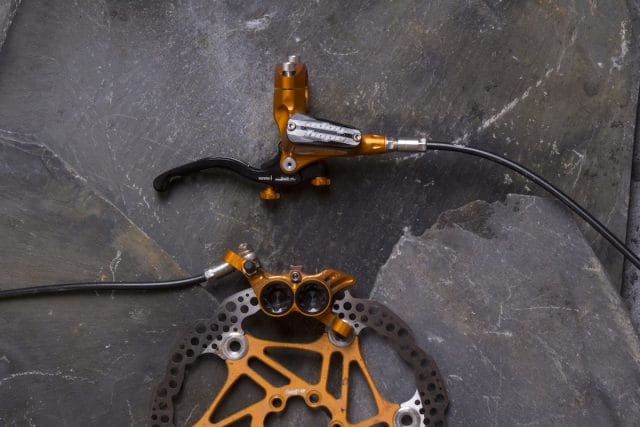
“The brakes we’ve been testing are the Tech 3 E4 brakes, and they’re claimed to be suitable for trail, enduro and downhill use.
Aesthetically, it doesn’t get much prettier than these. Made from 2014 T6 alloy that’s been CNC machined in Hope’s Barnoldswick factory, the Tech 3 E4 brakes are available in no less than six anodised colours. There are also options to customise the look with different coloured adjusters, reservoir top caps, and two-piece rotors, making these brakes the envy of all cycling magpies…” Read the full review here.
Easiest To live With: Shimano Zee
- Price: £134.99 per end (rotors & adapters sold separately)
- From: Madison
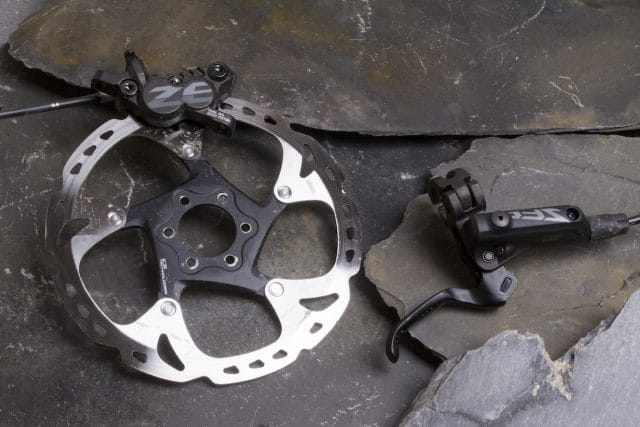
“Like all of Shimano’s high-end disc brakes, the Zees are a doddle to set up. There’s a 4mm hex key to bolt the split clamp to the bars, and you’ll need a 2mm hex key to set lever reach. The short lever blade has a comfortable and intuitive hooked profile, and if you’ve got a new generation I-Spec Shimano shifter, the two can share the same bar clamp. As for bleeding, using Shimano’s cup tool and One-Way Bleed system could not be any easier…” Read the full review here.
Best All Round: SRAM Code RSC
- Price: £229 per end (rotors & adapters sold separately)
- From: ZyroFisher
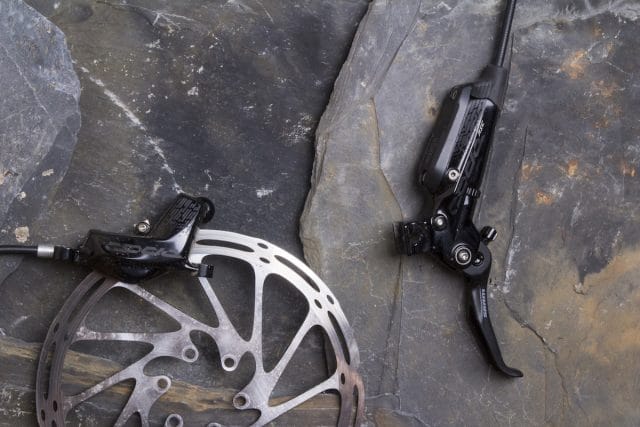
“And in essence, the Codes are just a more powerful version of the Guides. Compared to the Guide’s 14/16mm piston combo, the Codes get chunkier callipers packed with 15/16mm diameter pistons to increase stopping force by a claimed 15%. The levers are bigger too, holding 30% more fluid volume thanks to the piggyback reservoir. According to SRAM, this added fluid volume and an expandable rubber membrane means the Codes possess a greater ability to compensate for fluid expansion as the oil heats up. In a way, it’s kind of like a piggyback reservoir on a rear shock…” Read the full review here.
Best Feel: Trickstuff Direttissima
- Price: €375 per end (rotors & adapters sold separately)
- From: Trickstuff
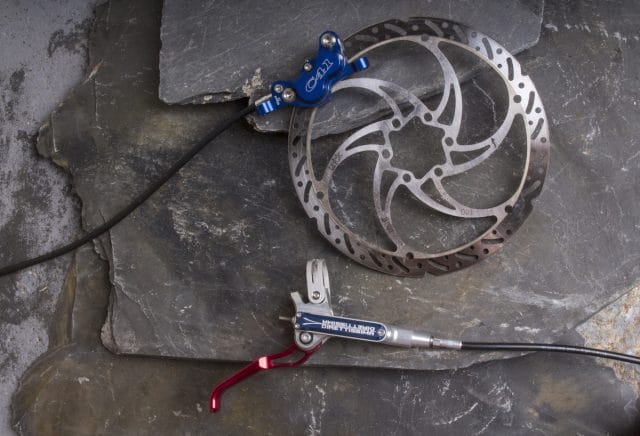
“The lever blade itself is wonderfully machined and flex-free, with a gentle hook at the end in which to nestle your index finger. It’s a little longer and thicker in profile than a Shimano lever, which some testers didn’t love, but the polished finish feels lovely and lets your finger slide along it as you push through the stroke. Trickstuff deliberately left the lever blade dimple-free for this very reason. With no less than four sealed cartridge bearings connecting the lever to the body and main piston, there’s no wiggle at all in the lever, and they feel airy-smooth as soon as you start pulling on them. With the exception of the Codes, every other brake lever on test felt sticky in comparison…” Read the full review here.
The Verdict
Coming into this group test, there was no denying that we had plenty of preconceptions, based on both prior experience with the brakes we’d previously ridden, and assumptions of the brakes we had not.
We also came into this group test wondering just how different each brake could be, and why one would pursue going past the big name options. After all, the disc brake market has been largely dominated by the likes of Shimano and SRAM for the past decade for plenty of good reasons, including the fact that both brands have long offered a solid array of disc brakes that cover a wide range of price points. But as we’ve discovered from our group test, there are most certainly some excellent options out there for those who are willing to go past the mainstream options.
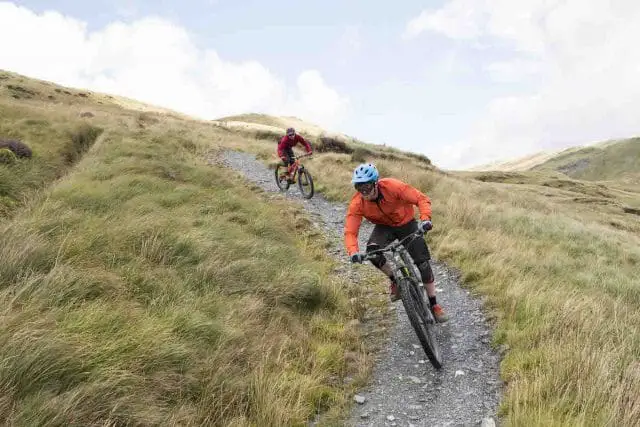
What we also found from this group test was how a different braking feel could affect your riding experience out on the trail. Some brakes were instantly intuitive, which helped to free up brain power to concentrate on other things. Other brakes required more attention to locate the transition point between the bite point and the power ramp-up, and that led to a significant drop in confidence on the trail. Likewise, some riders simply preferred a grabbier ‘on/off’ feel for scrubbing speed quickly and late, while others wanted smoother power delivery for braking earlier and more softly.
Because everyone’s riding style and riding conditions are different, which brake will suit you kind of depends on what you’re looking for.
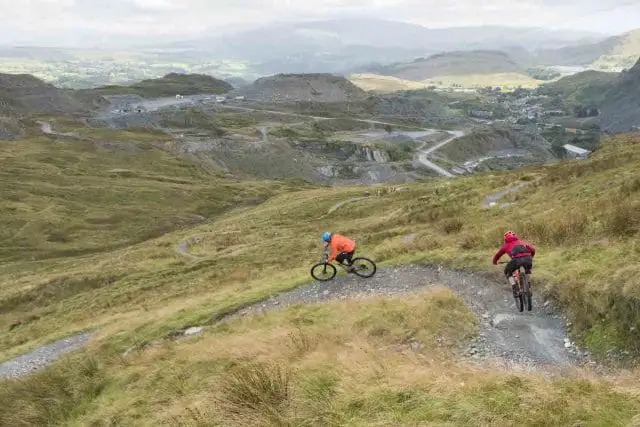
If you’re in search of sheer power, the Trickstuff Direttissimas and Magura MT Trail Carbons are sure to pull several Gs through your body when required, while the SRAM Code RSCs are also mighty powerful, but with extra adjustability and control. For heavier riders and those who ride long-travel bikes that spend a lot of time in the mountains, these are the three brakes we’d recommend looking at.
As for a brake that modulates well, the TRP Slates, Hope Tech 3 E4s and Shimano Zees offered the smoothest power curves, making them ideal for riders who don’t necessarily want to lock up their tyres on a 2p coin, but would rather a brake they can feather on slippery sections of trail. All three options are low-fuss when it comes to service and upkeep too, though it’s the Shimano Zee that we’d choose for more usable power.
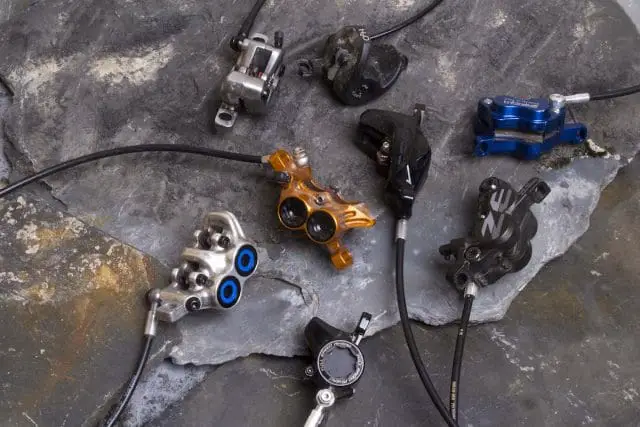
The Competition
In our disc brake group test, we tested eight brakes in total. Some were outstanding in certain areas, and others performed well across the board. But with just four awards up for grabs, that left four remaining brakes that narrowly missed out on the glory. To read the full reviews of each of the trail brakes you see below, keep your eyes peeled on singletrackworld.com over the coming weeks.
Brake Force One H2O
- Price: €594 (for the set)
- From: Brake Force One
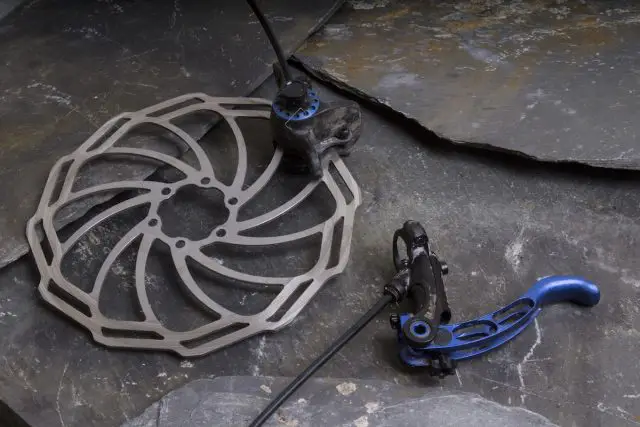
“Made by a small German brand called Brake Force One (BFO), the H20 brakes are named accordingly because their hydraulic lines are filled with 20% glycol, and 80% water. The brakes are as unique in use as they are in design, with an incredible amount of power on tap from their beautifully machined lever blades…” Read the full review here.
FSA Afterburner
- Price: £199 per end (rotors & adapters sold separately)
- From: Windwave
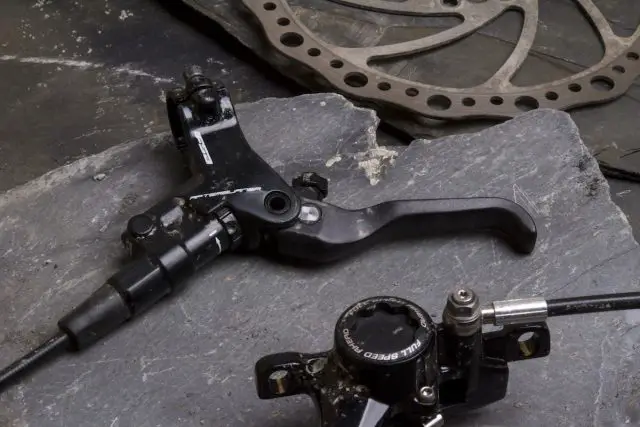
“The Afterburners sit underneath FSA’s flagship K-Force brake. The ambidextrous levers are filled with mineral oil, and the rear brake actually uses a stiffer hose up front to reduce flex and keep the lever feel consistent. The Afterburners bring the power on gently, with a bias towards modulation over outright stopping power…” Read the full review here.
Magura MT Trail Carbon
- Price: £492.00 (for the set without rotors & adapters)
- From: Magura
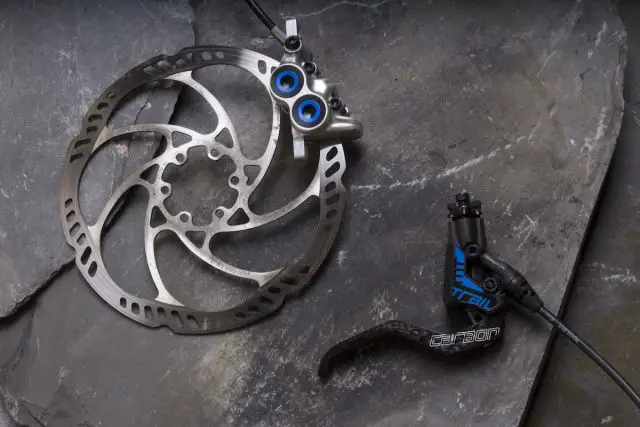
“These combine the power of the four pot MT7 downhill brake on the front, with the modulation of the lightweight MT8 brake on the rear. The difference in braking power takes a while to get used to, but there’s plenty of eye-watering power and control for riders who spend a lot of time on high altitude trails…” Read the full review here.
TRP Slate G-Spec
- Price: £124.99 per end (rotors & adapters available separately)
- From: Upgrade Bikes
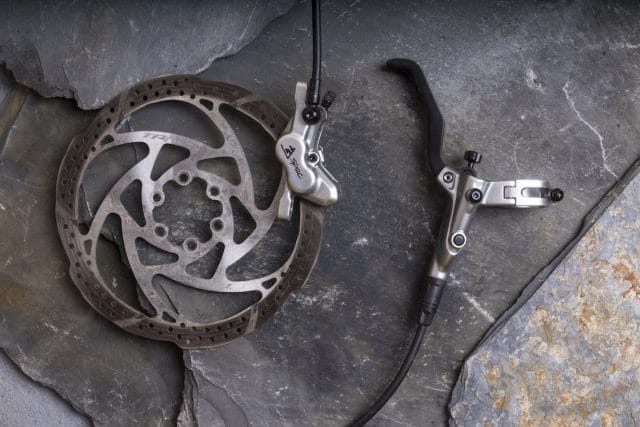
“Thanks to Aaron Gwin, TRP has developed a new ‘G-Spec’ version of its Slate trail brake. The callipers are equipped with four hybrid composite pistons per end, and semi-metallic pads for consistent performance on extended downhills. Although there are more powerful brakes out there, the Slate delivers excellent modulation and is super easy to set up and maintain…” Read the full review here.
